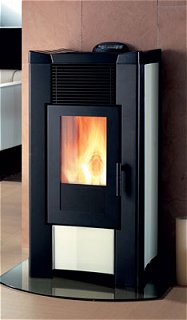It is often frustrating to note that when you look for some information on
Room Heaters on the web you encounter a variety of heaters bearing a
multitude of confusing nomenclature.

You may encounter names such as boilers, stoves, radiant heaters, radiators and a variety of sub divisions of these etc. and it is not your fault if you feel lost.
What are the types of Room Heaters available in the market?
All types of space heaters are broadly divided in to two categories according to the location of them, namely;
• In-space Heaters
• Centralized Heaters
As the name implies the Centralized Heaters (irrespective of any other differences) may be remotely located from the space to be heated. A ducted warm air ducting system or in the alternative a hydronic (or liquid circulating) piping system will bring the warmth of the thermal energy to the places of need. They are costly to buy, install and maintain .Therefore are popular in general only in larger buildings.
In contrast the in-space heaters are located within the room (space) where the warmth is desired. The fuel is consumed within the space to be heated. They are self contained and dedicated units popularly used in domestic applications and small commercial establishments.
Types of in –space Room Heaters
These may be;
• Permanently installed
• Portable
Good example of permanently installed in space heater is the age old fire place in the living area. A Gas “in –space” heater is a typical example of a portable unit.
The energy source may be;
• Liquid
• Gaseous
• Solid or
• Electrical
The transfer of heat to the space may be by a combination of radiation, natural or forced convection.
In Space Heaters according to the fuel used
According the fuels used the in space heaters are generally classified as follows;
• Gas “in-space” Room Heaters –The fuel used is generally natural gas. It is a self contained, free standing, non-recessed gas burning appliance radiating heat to the space within which it is located. These may be vented or unvented. The Vented type may again be Gravity vented or Fan vented. The vented room heaters have to be connected Vent, Chimney, or single walled metal pipe and should be designed for positive air flow to out side. In contrast the non vented in-space heaters need a fresh air intake. The heater should include an Oxygen sensor and an interlocked automatic heater shut down for health reasons. The most advanced design currently available is the catalytic type which uses a catalytic conversion of a good portion of the gas to heat energy sans the visible flames. The heat transfer is by low temperature radiation and convection air currents.
Inherently the flame-less nature offers a high level resistance to fire risks unlike conventional designs. Therefore an European Practice is to use these mounted on casters making them portable while using without venting. They also generally incorporate a built-in LPG cylinder.
The various designs include;
o Vented Circulator in space Room Heaters
o Vented Radiant Circulator
o Unvented Radiant or Convection Room Heaters
o Catalytic Room Heaters
• Gas in-space Wall Furnace-These gas burning furnaces are self contained vented appliances with grilles forming an architectural building feature. The Hot air is circulated by natural or fan forced air circulation. Some may have boots extending about 250mm to an adjoining room for heating that. Wall furnaces are further sub divided as;
o Conventional vent units- A conventional vent is fitted. Some have counter flow air direction with the hot air discharged at floor level.
o Vented recessed wall furnaces-The heater being recessed only the wall frill is visible from the room. The design allows for more free room space. The heaters are generally natural convection air flow design with the hot air being discharged at the top of the unit. Additional fans may be used to assist the circulation across the room.
o Direct vent Wall furnaces- In this type the fresh air is brought direct to the Heater unit and the flue gasses are similarly exhausted to outdoors. Majority is designed for natural convection but some come with fans. The heater is best suited for mounting on external walls and recessed with a grille exposed to the space. Well suited for air tight spaces where the direct venting comes in handy. Also infiltration (leakage) air losses are at a minimum saving energy.
• Floor Furnaces-These are floor mounted units and have a register (i.e. a Grille with a damper) from the periphery of which cold air is collected and from the center of same hot air is discharged. The combustion air as well as flue gases are vented direct to out doors.
With the next articles that will follow you will be taken through a tour of other types of
in-space room heaters illustrating their merits and demerits. There will be a discussion on the solid fuel burning burners which is certain to interest you from an energy and resource saving perspective. Meet us there!